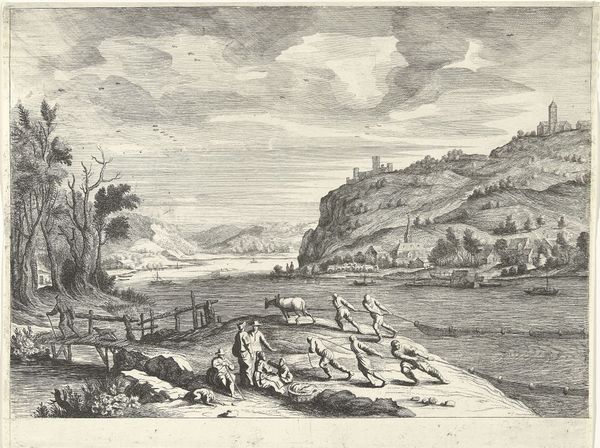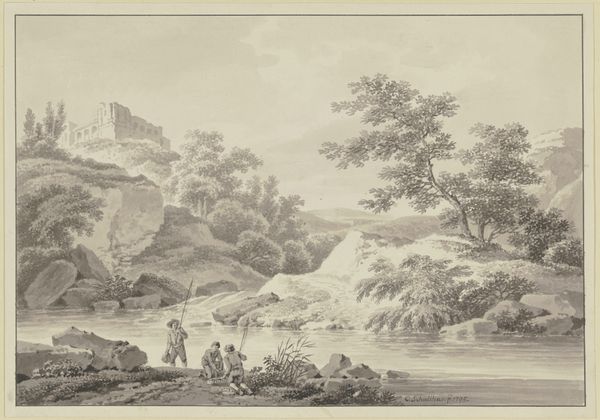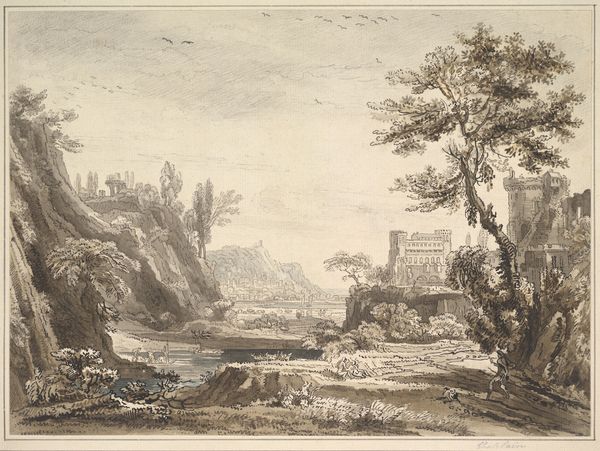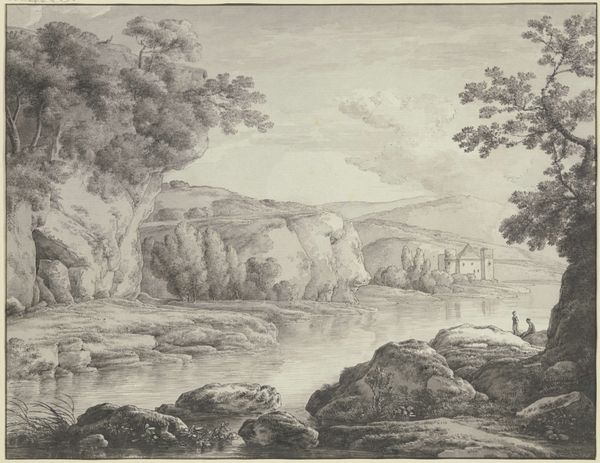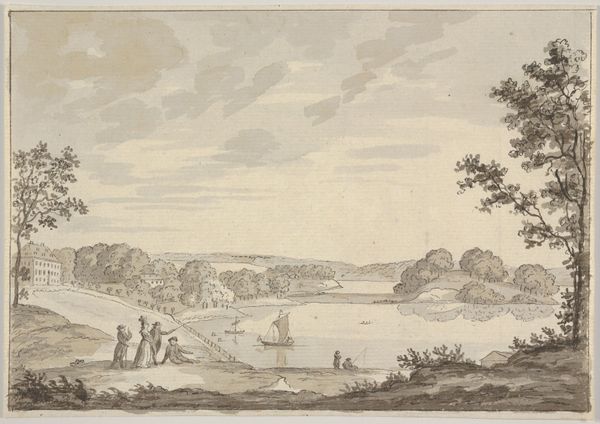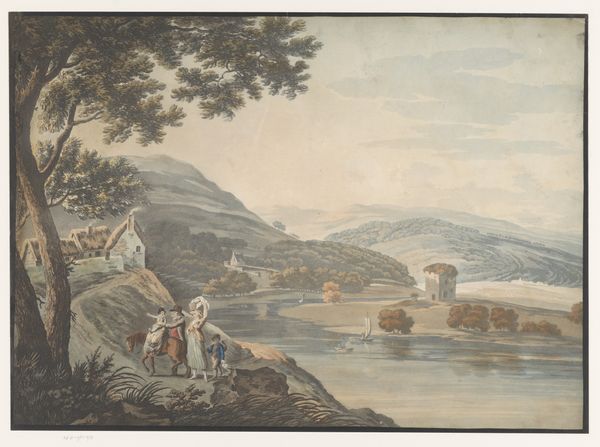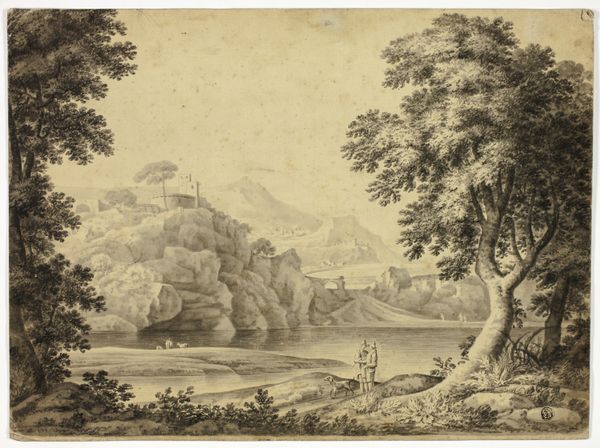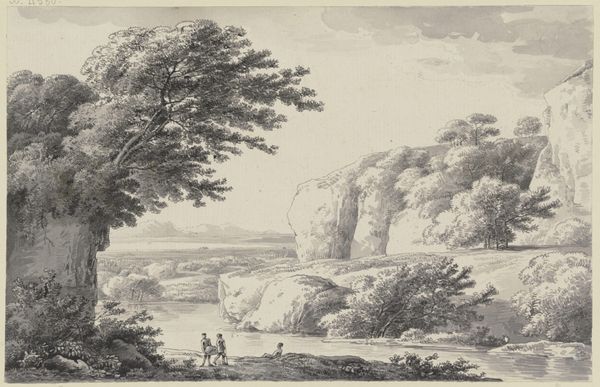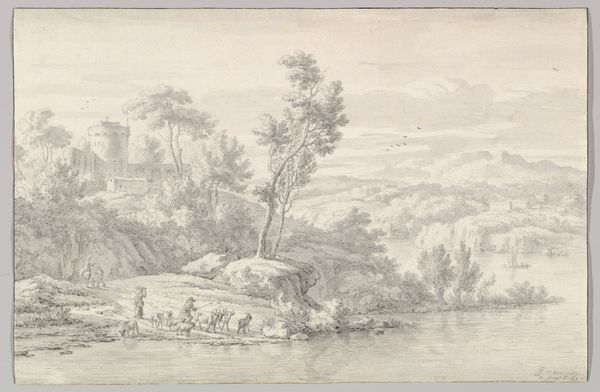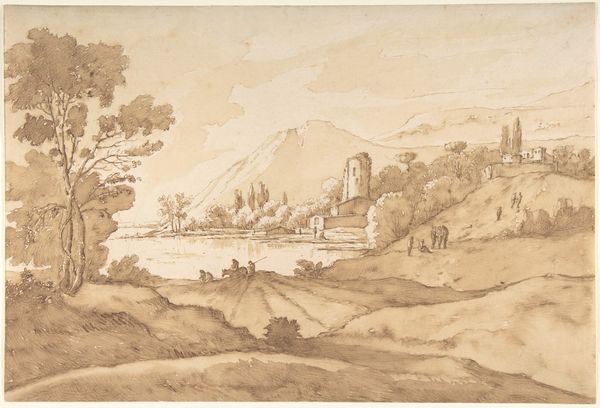
Copyright: Public Domain
Editor: So, here we have "Fortified City on a River," an ink and engraving work by Adrian Zingg, created in 1777. The hazy greyscale creates such a calm, almost dreamlike scene. I’m curious, what elements really stand out to you when you look at this? Curator: It's intriguing how Zingg combines ink and engraving, processes with different labor demands and origins – the fluid hand of drawing versus the reproductive labor of engraving. This challenges typical hierarchies within art production, doesn't it? Note the meticulous detail in the architecture set against the relatively softer rendering of the natural elements, indicating varied application of artistic labor. What does this distinction suggest to you about the perceived value, or marketability, of these subjects in 18th-century landscape art? Editor: That's a great point about the contrast in techniques and what that might suggest. I hadn't considered the idea of 'artistic labor' in that way. So, the detailed architecture implies more labor-intensive creation which, perhaps, makes it more marketable? Curator: Precisely. Consider how the picturesque movement commodified these kinds of views. Was Zingg participating in that consumption or commenting on it through this material contrast? Look closely – the boats and fishermen feel somewhat anonymous, part of the landscape's utility, a daily grind depicted with minimal adornment. It's all about production and making; the architecture as product, the landscape as material and setting, and the daily labour of people in nature. Editor: The idea of the landscape being viewed almost as material for art creation…it makes me consider all the hands involved, not just the artist's. Thank you! Curator: Indeed. Material analysis sheds light not only on Zingg’s choices, but on broader systems of production and value operating within his time. A pertinent observation on how artistic processes mirror socioeconomic forces, I think.
Comments
No comments
Be the first to comment and join the conversation on the ultimate creative platform.

